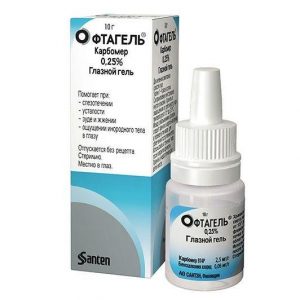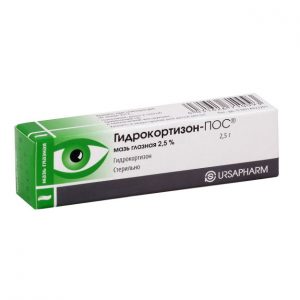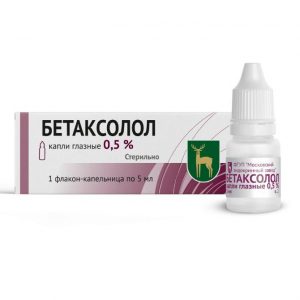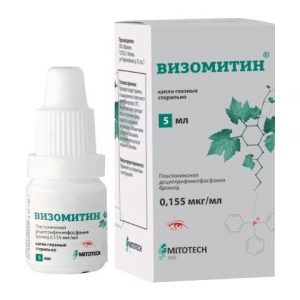Description
Release form
Eye drops
Pharmacological action
NSAIDs, a derivative of phenylacetic acid. It has a pronounced anti-inflammatory, analgesic and moderate antipyretic effect.
The mechanism of action is associated with the suppression of the activity of COX, the main enzyme of the metabolism of arachidonic acid, which is a precursor of prostaglandins, which play a major role in the pathogenesis of inflammation, pain and fever. The analgesic effect is due to two mechanisms: peripheral (indirectly, through the suppression of prostaglandin synthesis) and central (due to inhibition of prostaglandin synthesis in the central and peripheral nervous system).
Inhibits proteoglycan synthesis in cartilage.
In rheumatic diseases, it reduces joint pain at rest and during movement, as well as morning stiffness and swelling of the joints, contributes to an increase in range of motion. Reduces post-traumatic and postoperative pain, as well as inflammatory edema.
Suppresses platelet aggregation. With prolonged use it has a desensitizing effect.
When applied topically in ophthalmology, it reduces swelling and pain in inflammatory processes of a non-infectious etiology.
Pharmacokinetics
After oral administration, it is absorbed from the digestive tract. Eating slows down the rate of absorption, the degree of absorption does not change. About 50% of the active substance is metabolized during the first passage through the liver. With rectal administration, absorption is slower. The time to reach Cmax in plasma after oral administration is 2-4 hours, depending on the dosage form used, after rectal administration – 1 hour, intramuscular administration – 20 minutes. The concentration of the active substance in the plasma is linearly dependent on the size of the applied dose.
Does not cumulate. Plasma protein binding is 99.7% (mainly with albumin). It penetrates into the synovial fluid, Cmax is reached 2-4 hours later than in plasma.
is significantly metabolized to form several metabolites, two of which are pharmacologically active, but to a lesser extent than diclofenac.
Systemic clearance of the active substance is approximately 263 ml / min. T1 / 2 from plasma is 1-2 hours, from synovial fluid – 3-6 hours. Approximately 60% of the dose is excreted as metabolites by the kidneys, less than 1% is excreted in the urine unchanged, the rest is excreted in the form of metabolites with bile.
Indications
For local use: inhibition of myosis during cataract surgery, prevention of cystoid macular edema associated with removal and implantation of the lens, inflammatory processes of the eye of non-infectious nature, post-traumatic inflammatory process with penetrating and non-penetrating injuries of the eyeball.
Special instructions
Use with extreme caution in cases of liver, kidney, gastrointestinal diseases in the anamnesis, dyspeptic symptoms, bronchial asthma, arterial hypertension, heart failure, immediately after serious surgery, as well as in elderly patients.
For indications of a history of allergic reactions to NSAIDs and diclofenac sulfites, they are used only in urgent cases. In the process of treatment, systematic monitoring of liver and kidney function, peripheral blood picture is necessary.
Rectal administration in patients with a history of anorectal disease or a history of anorectal bleeding is not recommended. Topically, it should be used only on intact skin areas.
Avoid contact with diclofenac in the eyes (with the exception of eye drops) or on the mucous membranes. Patients using contact lenses should apply eye drops no earlier than 5 minutes after removing the lenses.
Not recommended for use in children under 6 years of age.
Alcohol is not recommended during the period of treatment with dosage forms for systemic use.
Effect on the ability to drive vehicles and mechanisms
During the treatment period, a decrease in the rate of psychomotor reactions is possible. If visual clarity deteriorates after applying eye drops, you should not drive or engage in other potentially hazardous activities.
Composition
Composition 1 ml of the preparation:
Active ingredient:
diclofenac sodium – 1.0 mg.
Excipients: benzalkonium chloride, disodium edetate, boric acid, tromethamine, polyoxyl 35, castor oil, water for injection.
Dosage and Administration
Topically. To inhibit intraoperative myosis, the drug is instilled into the conjunctival sac for 2 hours at an interval of 30 minutes (4 times) before surgery.
To prevent cystic edema of the macula, the drug is instilled 1 drop 3-4 times a day for 2 weeks after surgery.
Other indications: 1 drop 3-4 times a day, depending on the severity of the condition. The course of treatment can last from 1 to 2 weeks.
pharmacy terms for prescription




